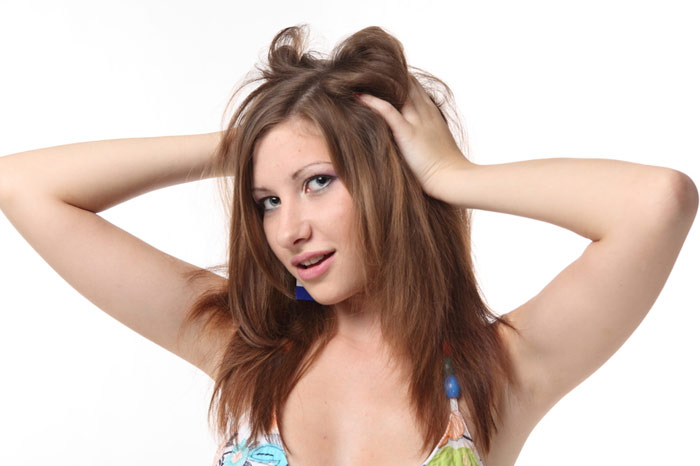Have you had this problem? You run your hand or a comb through your hair and feel acute pain because you have touched… a pimple. What an unusual place for pimples – the scalp covered with hair! A typical pimple, a red bump with a white head, is not normally expected to appear in the hair, on the back of your head, on the temples or on the top of your head. Today we’ll talk about why it happens and how to fight the problem.

Why do you get scalp pimples?
Firstly, it should be said that acne in the hair appears more frequently if you have oily skin. After all, pimples are more likely to appear on the face and sometimes on other parts of the body if a person has a dry or combined skin type. It’s all about the production of more sebum.
The reasons why pimples appear on the head include the following:
- Failure to comply with the rules of personal hygiene: for example, you rarely or not very carefully wash your head: specks of dust and unremoved dead skin cells clog pores, leading to acne.
- Brushing the hair too aggressively. If you’re used to combing your hair harshly, you face the risk of permanently injuring the scalp, without noticing this. These micro traumas and infections may lead to an inflammation. This is also possible if you often abuse tight hairstyles (such as a ponytail or African braids).
- Using a razor. If you get a hairstyle by shaving the hair in some areas, such as the back or the sides of your head, it may lead to furuncles. The cause is the same as with hard combing – the appearance of micro wounds which become infected. By the way, this is the reason why pimples often appear on the head of the men shaving their head bald.
- Constant stress. As you know, all diseases are linked to nerves, and if you experience permanent stress, or you are living in continuous nervous tension for a long time, it is not surprising that the immune system begins to fail. At the same time, sebaceous glands begin to behave strangely.
- Low quality of water: its harmful components can settle on the hair leading to clogged pores and pimples.
- Hormonal disruptions: hormones are responsible for the sebaceous glands, so when the amount of your hormones changes, their secret production can dramatically increase. Pimples in the hair may appear during pregnancy, before or during menstruation.
- Immunosuppression. Our skin undergoes minor “injuries” quite often – without noticing, we constantly get micro traumas. If the immune system works well, they do not pose any threat to us, but if the immune system is suppressed, even a trifle can lead to the formation of pustules.
- Unhealthy diet: eliminate smoked, fried, spicy, fast food and sweets from the diet and you will soon notice a change for the better. Your skin, the hair, the nails, and the figure will appreciate that.
If you have eliminated all of the above factors, the frequent appearance of pustules on the head may indicate the presence of a disease associated with metabolism or internal organs. See your doctor!
How to Get Rid of Scalp Pimples?

- You should start with food: give up the already mentioned harmful products and introduce fruits, vegetables and steamed food in the daily diet. Do not forget to take extra vitamin complexes, especially in winter.
- Change your shampoo and choose a well-tested brand. Read the reviews on the Internet and go to the store. Perhaps pustules are caused by a shampoo of poor quality.
- Disinfect the scalp every day – every pimple should be treated with an alcohol-containing tonic. If the pimple is sore, which usually happens when it grows, disinfect it several times a day. Pimples will be healed more quickly if you apply anti-inflammatory ointment or tea tree oil – these substances reduce the inflammation and kill the bacteria.
- Use a comb that is rounded at the tips, stop using razors to shave the scalp, and give up your daily wearing of tight hairstyles.
- Wash your hair at least twice a week and make sure that the shampoo is thoroughly washed. If the water is bad in your area, rinse your hair with bottled water or even mineral water.
- Finally, do not squeeze the pimples on the scalp. If a pimple is located on your face, you can gently remove and disinfect the damaged area, but the scalp is more complex: the bacteria from the hair can easily get into the wound that may lead to serious problems.










